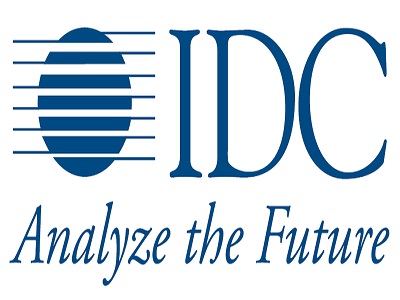E-Business
Market Experience, Knowledge Different Global IT Service Firms- Torchia

IDC Energy Insights announced on Monday, the availability of a new IDC MarketScape designed to evaluate IT (professional) services firms that provide consulting, project management and IT outsourcing offerings for utility smart grid investments on a worldwide basis.
The new report, “Worldwide IT Professional Services for Utility Smart Grid 2014 Vendor Assessment,” analyzes quantitative and qualitative characteristics of vendor offerings (delivered today and planned for the future) and actual performance as rated by IT service firm clients.
The report is based on a rigorous evaluation framework that assesses vendors relative to the evaluation criteria. Vendors evaluated in this report include: Accenture, Atos, Capgemini, CGI, IBM, Infosys and T-systems.
This IDC MarketScape provides an assessment of firms with a global capability to deliver services across major regions APAC, Europe and North America.
The assessment looked at firms that deliver business consulting, IT consulting, systems integration, and IT outsourcing.
There are many other vendors that offer a partial list of IT services that deliver on a local, regional and national level. The vendors in this assessment provide utilities an integrated IT service capability.
“Regional market experience and knowledge is an effective pollinator of ideas for other regions. It is this dynamic that places global IT services firms at an advantage. Since the major regions of APAC, Europe and North America are in their own right unique to each other, project diversity is identifiable and growing. Carrying the experience from one region to competency centers and clients in other regions will allow utilities to learn and innovate from the sharing of ideas that IT services firm gather,” said Marcus Torchia, research manager, Worldwide Smart Grid Strategies.
IDC Energy Insights suggests utilities should use this new report to aid internal utility processes around vendor identification and selection. Further, IDC Energy Insights recommends the following actions for utilities: Identify an initial uncut list of IT services firms.
Float an RFI to the firms initially identified and use an assessment approach on the responses to determine the short list for RFP invitation.
Identify the top two or three firms, work through key details before final selection including filling resource gaps i.e. employee turnover, and how they will be managed from a schedule standpoint; pricing additions and out of scope work i.e. time and materials, outcome based; etc.
IDC MarketScape criteria selection, weightings, and vendor scores represent well-researched IDC judgment about the market and specific vendors.
IDC analysts tailor the range of standard characteristics by which vendors are measured through structured discussions, surveys, and interviews with market leaders, participants and end users.
Market weightings are based on user interviews, buyer surveys and the input of a review board of IDC experts in each market. IDC analysts base individual vendor scores, and ultimately vendor positions within the IDC MarketScape, on detailed surveys and interviews with the vendors, publicly available information and end-user experiences in an effort to provide an accurate and consistent assessment of each vendor’s characteristics, behavior and capability.
IDC MarketScape vendor analysis model is designed to provide an overview of the competitive fitness of IT, telecommunications, or industry-specific suppliers in a given market.
The research methodology utilizes a rigorous scoring methodology based on both qualitative and quantitative criteria that results in a single graphical illustration of each vendor’s position within a given market.
IDC MarketScape provides a clear framework in which the product and service offerings, capabilities and strategies, and current and future market success factors of IT, telecommunications, or industry-specific vendors can be meaningfully compared.
The framework also provides technology buyers with a transparent foundation to allow companies to independently compare the strengths and weaknesses of current and prospective vendors.
E-Business
Transcorp Hotels Delivers Stellar H1 Results, Declares Over ₦1Bn Dividend

Transcorp Hotels Plc has delivered a stellar performance in the first half of 2025, recording a 60% year-on-year surge in revenue to ₦47.57 billion, up from ₦29.72 billion in H1 2024. Gross profit climbed 71% to ₦36.21 billion, maintaining a strong 76% margin despite inflation and operational headwinds.

The hospitality giant, a subsidiary of Transnational Corporation Plc, also announced an interim dividend payout of ₦1.024 billion — offering ₦0.10 per 50 kobo ordinary share to shareholders.
In a bold move, the company unveiled Nigeria’s largest corporate venue — the 5,000-seat Transcorp Centre — staking its claim as the new leader in event hospitality. Chairman Emmanuel Nnorom described the results as proof of Transcorp Hotels’ transformative strategies and unwavering investor commitment. MD/CEO Uzo Oshogwe attributed the success to relentless execution and a resilient business model.
Transcorp Hotels, renowned for iconic assets like Transcorp Hilton Abuja and its digital platform Aura, says it isn’t just leading Nigeria’s hospitality sector — it’s redefining excellence across Africa.
E-Business
Microsoft Servers Hacked by Chinese Groups

Chinese “threat actors” have hacked Microsoft’s SharePoint document software servers and targeted the data of the businesses using it, the firm has said.

China state-backed Linen Typhoon and Violet Typhoon as well as China-based Storm-2603 were said to have “exploited vulnerabilities” in on-premises SharePoint servers, the kind used by firms, but not in its cloud-based service.
The US tech giant has released security updates in response and has advised all on-premises SharePoint server customers to install them.
“Investigations into other actors also using these exploits are still ongoing,” Microsoft said in a statement.
The firm said it had “high confidence” the hackers would continue to target systems which have not installed its security updates.
It added that it would update its website blog with more information as its investigation continues.
Microsoft said it had observed attacks in which hackers had sent a request to a SharePoint server “enabling the theft of the key material by threat actors”.
Charles Carmakal, chief technology officer at Mandiant Consulting firm, a division of Google Cloud, told reporter, it was “aware of several victims in several different sectors across a number of global geographies”.
Carmakal said it appeared that governments and businesses that use SharePoint on their sites were the primary target.
A number of adversaries who stole material encoded by cryptography were then able to regain ongoing access to the victims’ SharePoint data, he said.
“This was exploited in a very broad way, very opportunistically before a patch was made available. That’s why this is significant,” Carmakal said.
Carmakal said the “China-nexus actor” was deploying techniques similar to previous campaigns associated with Beijing.
Microsoft said Linen Typhoon had “focused on stealing intellectual property, primarily targeting organizations related to government, defence, strategic planning, and human rights” for 13 years.
It added that Violet Typhoon had been “dedicated to espionage”, primarily targeting former government and military staff, non-governmental organizations, think tanks, higher education, the media, the financial sector and the health sector in the US, Europe, and East Asia.
Meanwhile, Storm-2603 was “assessed with medium confidence to be a China-based threat actor”.
E-Business
NIMC Warns Nigerians of Fake NIN Website

National Identity Management Commission (NIMC) has issued a public warning that it is not associated with NINcard.com.

According to the commission, the website has been circulating online to offer services for Nigerians seeking National Identification Number (NIN) services.
NIMC, in a post on its official X account on Wednesday, said, “NINcard.com is not in anyway affiliated to NIMC. Stay vigilant!”
The warning was accompanied by screenshots of fake payment receipts and OTP request pages from the website, both of which were boldly stamped “FAKE” by NIMC to alert the public.

 Telecom2 days ago
Telecom2 days agoGlo Launches Nigeria’s First-of-its-kind Device Protection Plan

 Telecom2 days ago
Telecom2 days agoTelcos: How and Why Network Services have Been Poor

 Broadcasting2 days ago
Broadcasting2 days agoCanal+ Clears Final Hurdle to Acquire South Africa’s MultiChoice

 E-Business2 days ago
E-Business2 days agoNIMC Warns Nigerians of Fake NIN Website

 Telecom2 days ago
Telecom2 days agoMTN Executive Adeola Oduntan Emerges as Africa’s Supply Chain Leader of 2025

 Telecom2 days ago
Telecom2 days agoMTN Nigeria Sweeps Africa’s Procurement Awards With Innovation and Impact

 E-Business2 days ago
E-Business2 days agoMicrosoft Servers Hacked by Chinese Groups

 Telecom2 days ago
Telecom2 days agoTelegram to allow U.S. users send, receive crypto directly in app

























